If you are a fan of Japanese cuisine, you may have heard of furikake, an essential part of daily meals in Japan. It is a familiar seasoning in Japan, and its history is ancient, representing a unique aspect of Japanese food culture. However, do you all know the origin of “furikake”? Today, we would like to talk about the culture and history of furikake.
What is Furikake?
Furikake is a vital seasoning in Japanese cuisine that people use to add flavor and enhance the enjoyment of their meals. It consists of a mixture of various ingredients, including seasonings, colorants, and preservatives. Seasonings, such as amino acids, are chemically synthesized to replicate the savory taste found in ingredients like kelp and bonito flakes. Colorants, both natural and synthetic, are utilized to improve the appearance and retain the color of furikake. It’s worth noting that even natural colorants undergo artificial processing.
Additionally, manufacturers add preservatives to furikake to prevent its deterioration. While people widely cherish and use furikake, it’s important to be mindful of potential health risks associated with excessive consumption of certain additives.
History
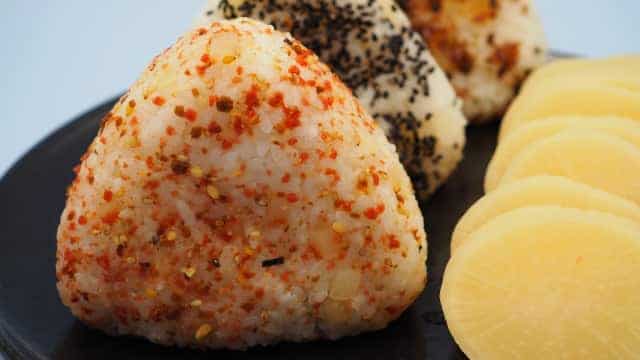
Origin
Actually, the person who came up with the idea for furikake was a pharmacist from Kumamoto Prefecture. Let’s go back in time to the early Taisho period. The pharmacist thought of grinding fish bones into powder to supplement calcium deficiency. Additionally, by adding sesame seeds and nori seaweed as seasonings, they believed that even people who didn’t like fish could enjoy it. They tried putting it on top of rice and eating it, and that was the beginning of “furikake.”
The manufacturer, Futaba Co., Ltd., located in Kumamoto Prefecture, commercialized this furikake under the name “Gohan no Tomo” (Friend of Rice), and it is now recognized as the original furikake. While the manufacturer has made various improvements, they continue to sell it to this day.
Evolution and popularization
Later, in 1925, Mr. Kai Seiichiro, the owner of a grocery store in Fukushima Prefecture, dried and powdered white fish, mixed it with kelp powder, simmered it in a soy sauce-based sauce, dried it again, and added sesame seeds and seaweed. This product was well received, and they expanded to Tokyo, starting a full-fledged furikake business. This eventually became the origin of the familiar brand “Marumiya.”
At that time, people considered furikake a luxury item, so only people of a certain social class could afford to eat it. As times changed, furikake has become a popular choice for the general public. Nowadays, various flavors of furikake are available for sale, offering enticing aromas and flavors just by sprinkling it on rice.
Ingredients of Furikake
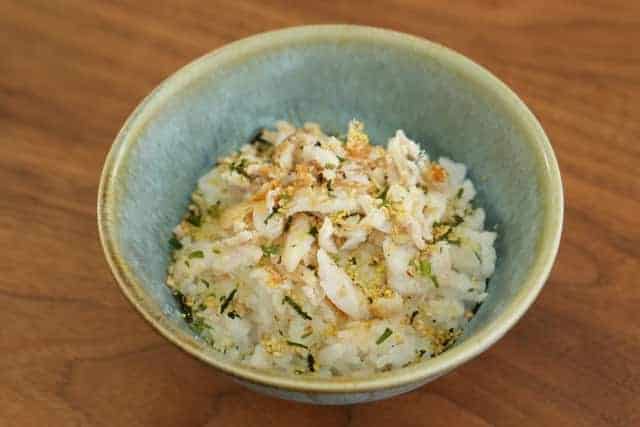
The ingredients used in furikake have display names that may interest consumers. Let’s discuss four ingredients often confused with food additives.
The first ingredient is hydrolyzed protein, which is produced by breaking down plant-based or animal-based proteins using acid or enzymes. It falls under the category of “food” and is not classified as a food additive.
Another ingredient is seasoning granules, which are created by boiling ingredients like kelp, bonito flakes, or dried sardines and then turning the resulting liquid into granules. They are used to enhance the flavor of natural broth and are not considered food additives. However, it is important to be cautious about their high salt content.
Dextrin is from the chemical breakdown of starch found in grains. It is not categorized as a food additive. However, excessive consumption of dextrin may increase the risk of lifestyle-related diseases. Additionally, it is worth noting that it can be sourced from genetically modified crops.
Yeast extract is an extract obtained from yeast components through artificial means. While it is classified as a “food,” consuming excessive amounts of it may potentially lead to taste disorders.
Although these ingredients do not fall under the classification of food additives, they can still impact the taste and contribute to lifestyle-related diseases if consumed in excess amounts of salt or sugar. Having knowledge about the ingredients is an essential aspect of maintaining an additive-free lifestyle.
Recommended Popular Furikake
NAGATANIEN – Otona no Furikake Wasabi
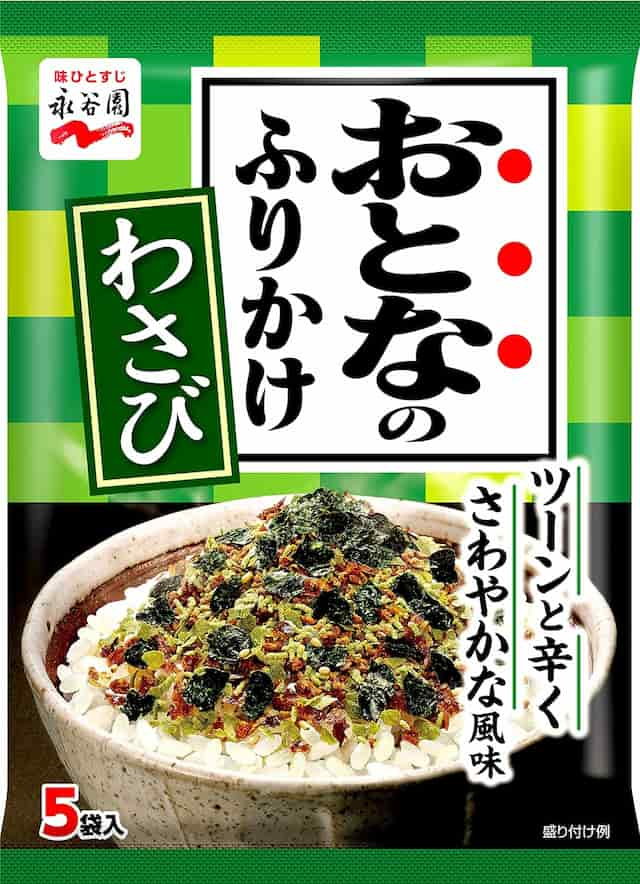
Nagatanien presents the “Otona no Furikake Wasabi,” a great value product that includes 10 sets of their popular furikake. Each set contains 5 individual bags, making it convenient for carrying.
With a flavor designed for adults, this furikake offers a slightly luxurious experience with a generous amount of carefully selected seaweed. It features a spicy kick of wasabi complemented by the savory richness of bonito flakes, ensuring a delicious taste that satisfies both long-time fans and newcomers alike.
Hagoromo – Papatto FuriFuri Katsuo
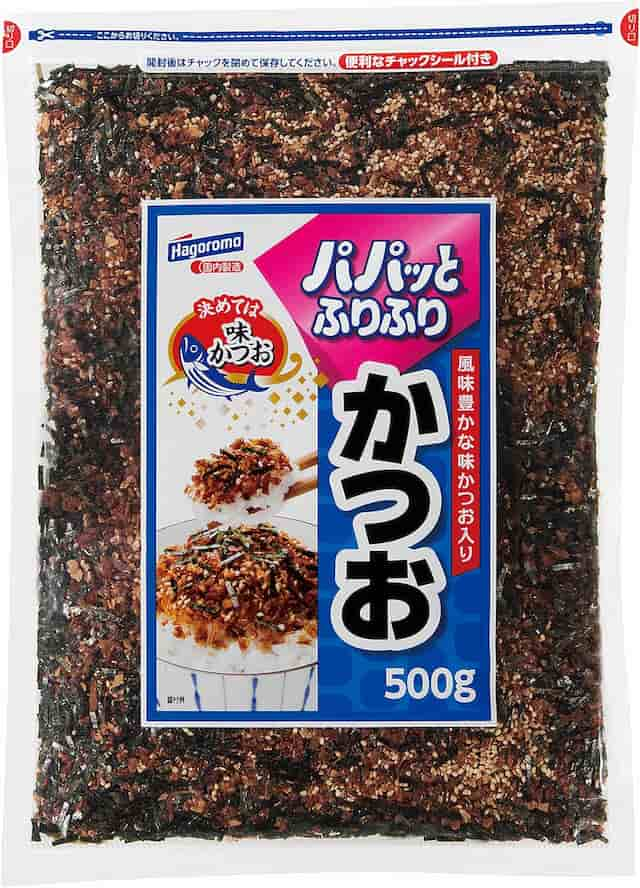
Hagoromo presents “Papatto Furifuri Katsuo,” a flavorful furikake made with seasoned bonito flakes. It blends the rich flavors of seasoned bonito, finely shredded nori seaweed, and sesame seeds, allowing you to fully enjoy the aroma and umami of bonito. The unique crispy texture, achieved through our special manufacturing process, pairs perfectly with warm rice.
Packaged in a resealable bag, it is easy to store, and the generous 500g quantity is cost-effective. With this furikake on your dining table, you can sprinkle as much as you like on your rice, making your meal even more enjoyable.
Marumiya – Noritama
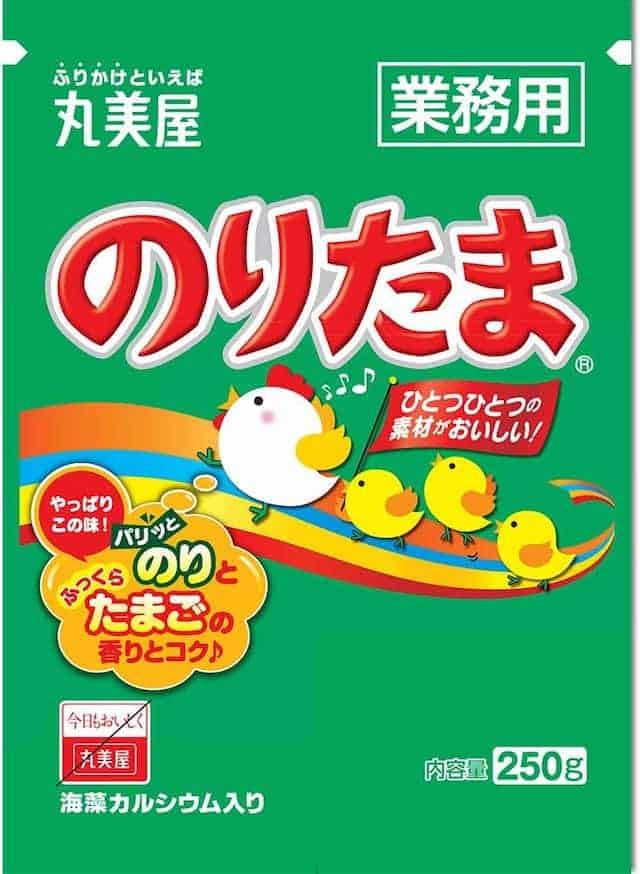
Marumiya’s “Noritama” is a well-known long-standing product that everyone is familiar with. Since its introduction in 1960, it has been loved as a synonymous furikake product and continues to be the number one choice among consumers.
The exquisite balance of nori (seaweed) and tamago (egg) in Noritama has captured the taste buds of many. Its enduring popularity over the years is a testament to its delicious flavor and high demand in the market.
Niben – Shittori Soft Furikake Katsuo Okaka

Ninben presents “Moist Soft Furikake Katsuo Okaka,” a furikake that prioritizes the deliciousness of katsuo (bonito flakes). Made with domestically sourced bonito flakes simmered in sugar and soy sauce, it has a slightly sweet and soft texture. The rich umami of the bonito flakes is enhanced by the use of high-quality brewed soy sauce.
With its robust flavor, this furikake is enjoyed by both children and adults alike, making it a classic choice. It is free from preservatives and artificial coloring, ensuring a wholesome seasoning option.
Ochanokosaisai – Kyoto La-Yu Furikake
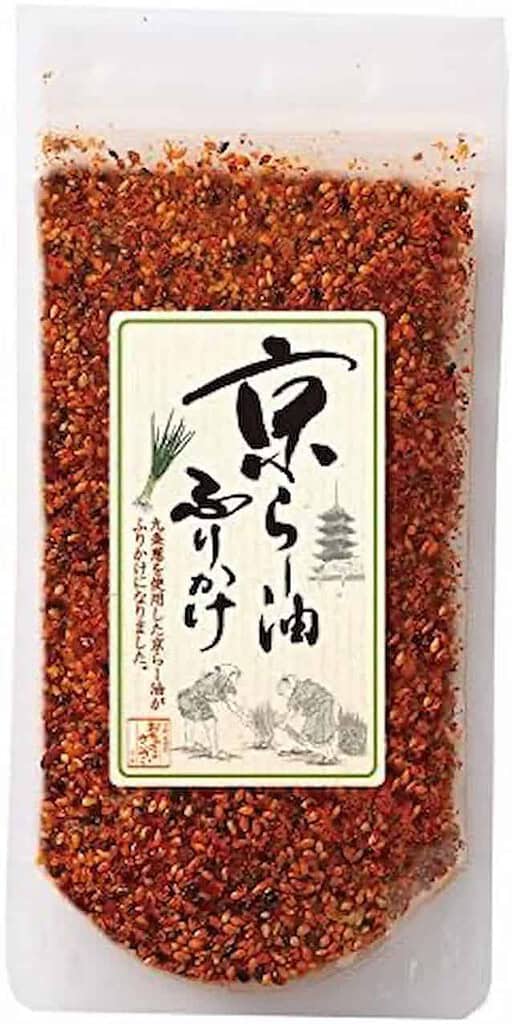
Ochanokosaisai presents “Kyoto La-Yu Furikake,” a furikake with a unique flavor exclusive to Kyoto. It features crispy sliced Kujyo negi (a type of green onion) that has been deep-fried, providing a crunchy texture and a delightful aroma. Packed with the spiciness of chili pepper and the umami of garlic infused in sesame oil, it delivers a delicious taste.
You can shop for various types of Furikake online. See below!
Furikake FAQ
- Are there any vegan or vegetarian options available for furikake?
Yes, there are vegan and vegetarian furikake options available, using plant-based ingredients like seaweed, sesame seeds, dried vegetables, and spices for flavoring.
- Can I store furikake for a long time, and how should it be stored?
Store furikake in a cool, dry place away from direct sunlight. Use sealed containers or resealable bags. Check the packaging for expiration dates, but generally, you can store furikake for several months to a year.
- Why is seaweed included in furikake ingredients?
Nori is included in furikake because of its high nutritional value and rich flavor and texture. Nori has a unique aroma and flavor that goes well with rice and is a traditional Japanese food. It also has a high shelf life and serves to add color to the appearance.
How to make Noritama Furikake?
Ingredients
| Ingredients | Amount |
| Katsuobushi (shaved bonito flakes) | 30-40g |
| A) Cane sugar | 1-2 tsp |
| A) Men-tsuyu (3x concentrated) or soy sauce | 1 tbsp |
| Eggs | 2 |
| B) Soy sauce | 1/2 tsp |
| B) Hon-mirin | 1 tsp |
| B) Salt | a pinch |
| Toasted sesame seeds | 1 tbsp |
| Nori (seaweed) or chopped nori | 1 bag (7 sheets) |
Methods
Place the Katsuobushi (shaved bonito flakes) in a frying pan.
Dry-roast the Katsuobushi over low heat for approximately 3 minutes.
Add (A) to the pan.
Mix well to combine the seasonings with the Katsuobushi.
Once mixed, remove the Katsuobushi mixture from the pan and set it aside.
In a bowl, beat the eggs thoroughly.
Add B) (1/2 teaspoon of soy sauce), B) (1 teaspoon of Hon-mirin), and B) (a pinch of salt) to the beaten eggs.
Mix the ingredients well until they are thoroughly combined.
In the same frying pan used for the Katsuobushi, add the egg mixture. If needed, lightly grease the pan before adding the eggs.
Using a whisk or fork, scramble the eggs in the pan until they resemble cooked ground meat.
Once cooked, remove the scrambled eggs from the pan.
In a mixing bowl, combine the cooked scrambled eggs and the reserved Katsuobushi mixture.
Add 1 tablespoon of toasted sesame seeds to the bowl.
Mix all the ingredients together until well incorporated.
Spread the mixture on a tray and allow it to cool.
Once cooled, crush the nori sheets by hand.
Add the crushed nori to the mixture in the tray.
Mix everything thoroughly to distribute the nori evenly.
The Noritama Furikake is now ready to use!
Recipe by @ちゃんちー
Recommended Restaurants/ Stores
Shinbashi Tamakiya (新橋 玉木屋 新橋本店)
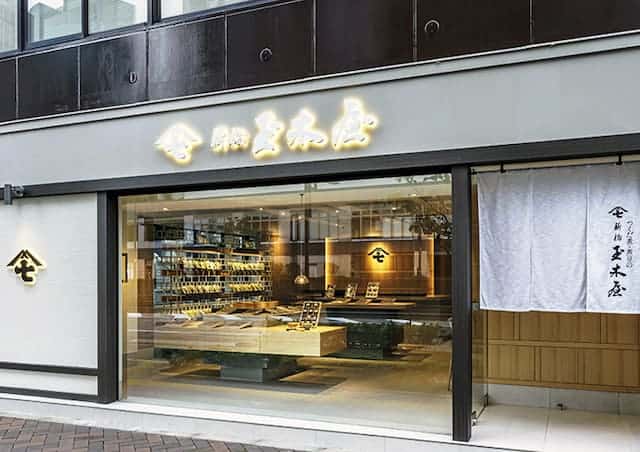
Tamakiya is a well-known store that has been offering traditional Japanese condiments and preserved foods since 1782. They specialize in tsukudani, a delicious dish made by simmering small fish, seafood, or vegetables in a flavorful blend of soy sauce, mirin, and sugar. Tamakiya also offers furikake, a seasoning mix with ingredients like bonito flakes, nori, and sesame seeds, which adds a tasty touch to rice. Their Zazen Mame, seasoned beans, are a popular snack and rice topping. If you are finding a place to experience the authentic flavors of Japan through the wide range of delightful products, visit Tamakiya.
Marumiya (丸美屋)
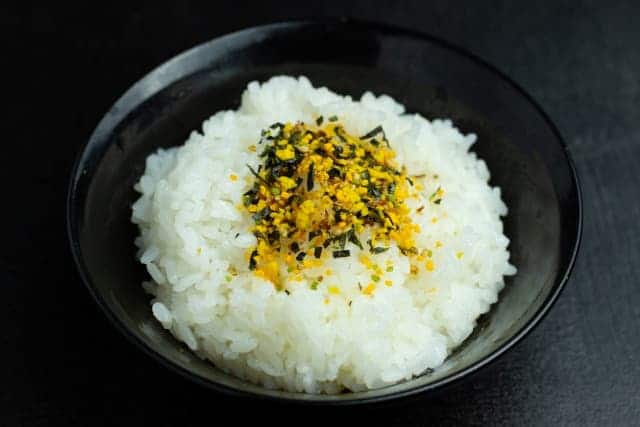
Marumiya is a popular company in Japan that sells furikake, a tasty seasoning blend. They have stores all over Japan, and you can find their products in every convenient store. Marumiya offers a wide range of furikake flavors, made with ingredients like seaweed, bonito flakes, and sesame seeds. Their furikake adds delicious flavor to meals and that is why it is so popular with Japanese. With their widespread availability and commitment to quality, Marumiya is a trusted choice for enhancing the taste of Japanese dishes.
Yamamoto Nori (山本海苔店 本店)
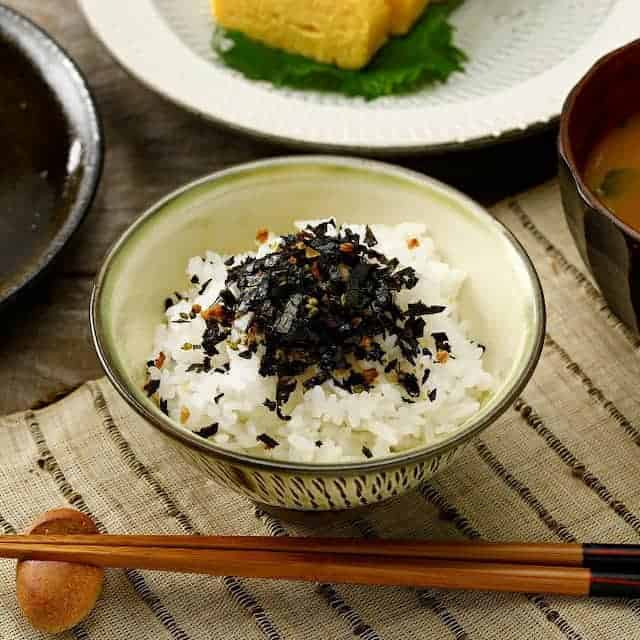
Welcome to Yamamoto Nori! Yamamoto Nori is a renowned company that has been producing high-quality nori since 1849. Yamamoto Nori is popular for its delicious flavored nori, including the popular Nori Kake Katsuo Aji. Nori Kake is a powdered nori topping that adds a savory taste to various dishes. Nori Kake Katsuo Aji, specifically seasoned with bonito flavor, enhances the flavors of rice, noodles, and more. Yamamoto Nori’s commitment to excellence and expertise in nori production ensures an authentic and flavorful experience. Explore the world of Yamamoto Nori and savor the deliciousness of our products!
Online shopping
For those who want to order or buy Furikake in Japan, you can mail it to your home online on Rakuten. You can check out some shops that sell it via Rakuten by clicking below.
And for those who want to order or buy but live away from Japan. You can ship them from Rakuten by following the steps below. Rakuten offers International Shipping Service, so do not worry about how to receive your items. Rakuten Global Express is an online shopping service that allows users to shop at stores in Japan.
Sign up
First, you need a Rakuten ID. If you are already a Rakuten member, you can start using Rakuten Global Express. If you have not registered yet, click here.
Get your personal RGX address
After signing up, you will get a Japanese address: a Rakuten Global Express address.
Shop at stores in Japan
Now that you get yourself a personal RGX address (Rakuten Global Express address). You can shop online in Japan, click here to shop for Furikake (not only Rakuten but other online stores are also included).
When you have decided on your items, set the delivery address to your Rakuten Global Express address.
Confirm items
After items are shipped to the RGX address, they will be packed into one package. You also receive an email upon confirming these items and payment.
Once the payment is confirmed, your package will be delivered within a designated period depending on your shipping choice.
Takeaway
Now that you have learned more about the ingredients, recipe, and our recommended furikake, you’ll find that it is a simple yet convenient seasoning available throughout Japan. Why not give it a try and share your thoughts? Furikake adds a burst of flavor to various dishes, from rice and noodles to salads and snacks. Its versatility allows you to get creative in the kitchen and explore new taste combinations. Whether you prefer the savory umami of seaweed or the aromatic blend of spices, furikake offers a convenient way to elevate your meals and bring a taste of Japan to your plate. Give it a go and let us know what you think!
Find out more about Japanese seasonings below

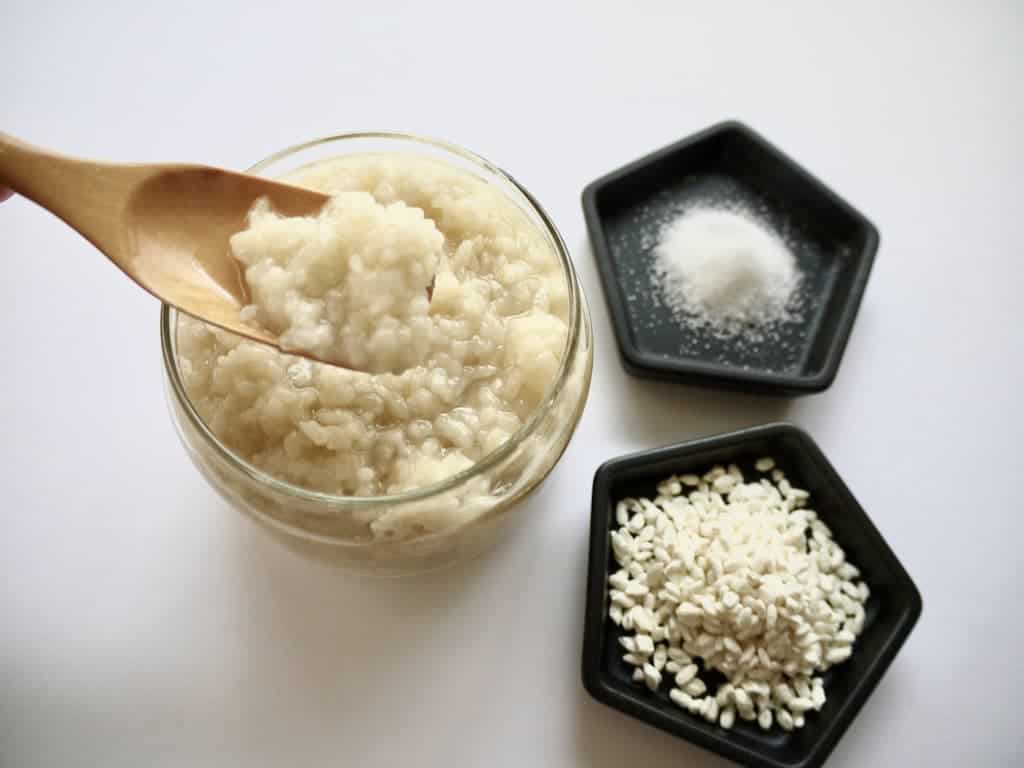



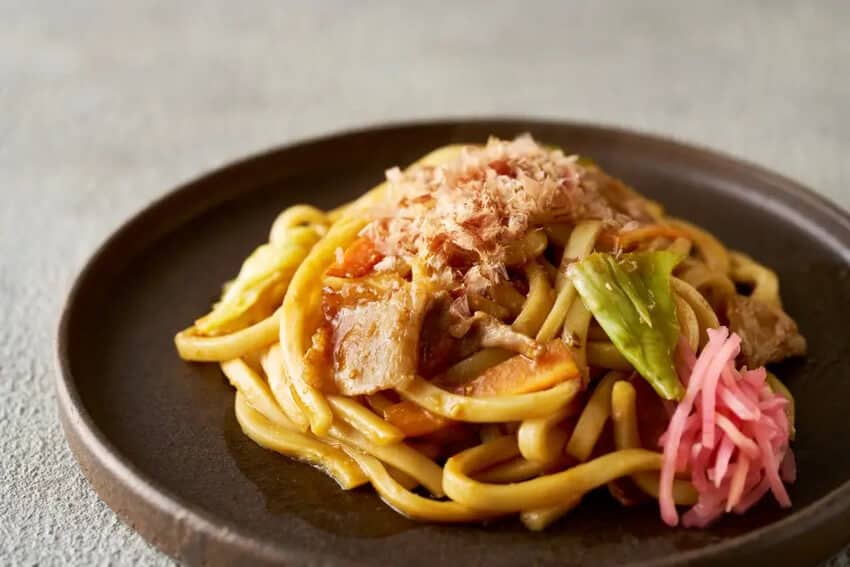
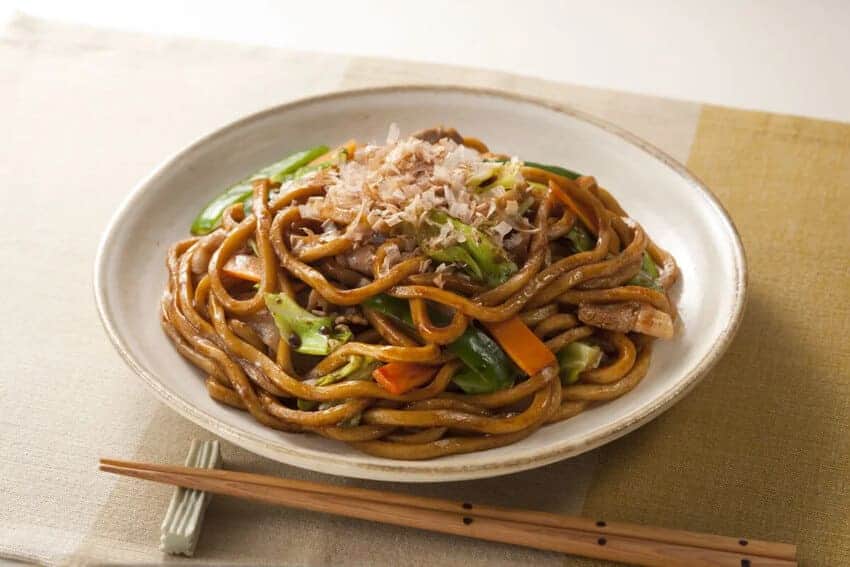

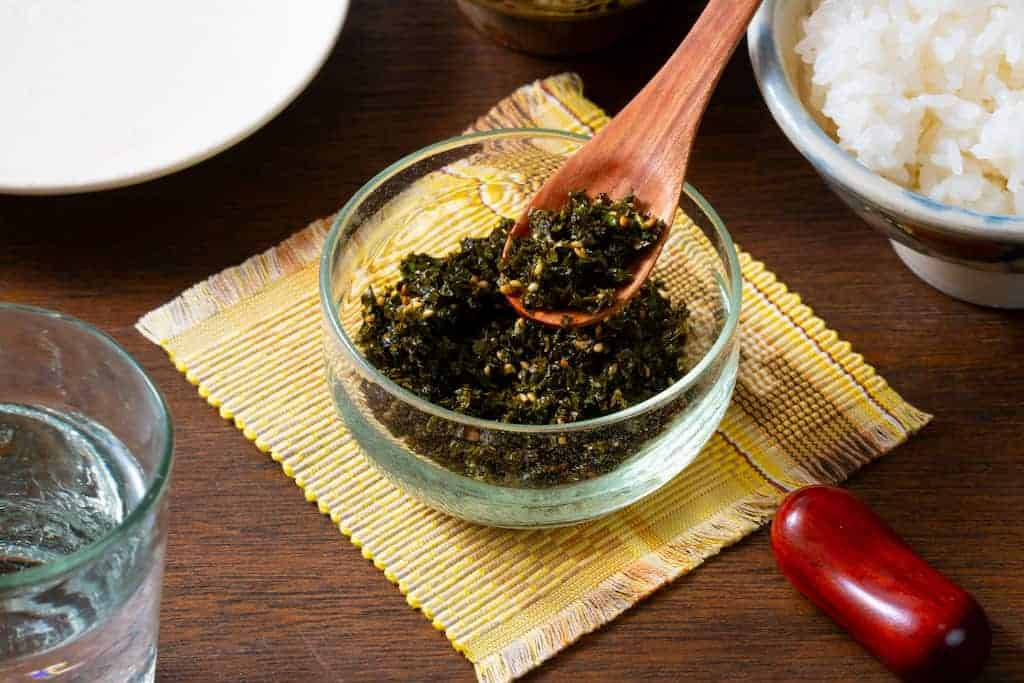
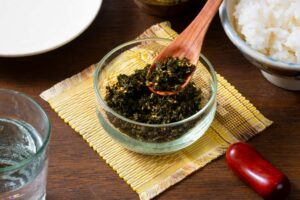
Comments